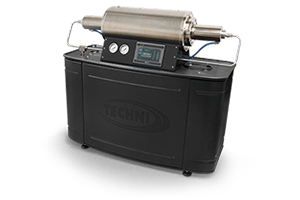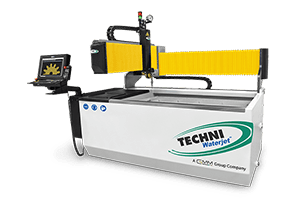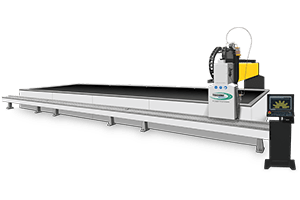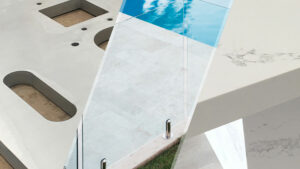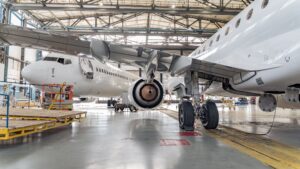Computer Numerical Control has been the driving force behind the running of industrial machine tools. Understanding what is computer numerical control can help beginners and even experienced professionals to optimize their industrial processes.
This article will have an in-depth discussion on what is computer numerical control, the basics of CNC programming language, CNC software, the benefits of CNC, various processes, challenges, and other important information.
What is Computer Numerical Control (CNC) Technology?
Computer Numerical Control, commonly written as CNC, is a type of control system that can provide automated movement and working of the machine tool. The instructions in CNC technology are written in a code format. The code is then uploaded to the machine with internal computers to analyze and interpret it.
It is common for CNC technology to be used in conjunction with subtractive CNC machining processes such as drilling rigs, milling machines, lathes, turning, and routers. It can also work in combination with additive technology like 3D printing.
How does computer numerical control differ from conventional manual control?
Computer numerical control differs from conventional manual control by adding automatic movement to the machine tools. Therefore, writing a one-time program can create an infinite number of parts by running the program on the machine tool in multiple iterations.
A one-time effort by the programmer can create any number of parts required. However, conventional manual control requires the operator to control the machining by hand for every part. Therefore, the machining of each part requires additional effort by the operator. This also creates variations in the parts manufactured by the manual control method.
What is the History of CNC Technology?
The history of CNC technology goes as far as the 1940s. The basic movement in the foundation of CNC was developed with 19th-century cams used to run cuckoo clocks and music boxes.
The technical part came later with the development of computing by Charles Babbage. John Parsons and Frank Stulen developed the idea of CNC machines for manufacturing helicopters. The proper application of CNC technology in machining became widely adopted in the later half of the 20th century.
What are the Main Components of a CNC System?
A CNC machine can come in many different types of designs. However, the main components are the same across all systems. These main components are:
- Microcontroller: Microcontroller is the brain of a CNC system. It interprets the language of the programs and provides instructions to the corresponding machine parts based on the commands. It is also known as Machine Control Unit (MCU) or CNC controller.
- Input Device: The input device enables the operator to load various programs in the CNC machine. Certain settings may be adjusted through the input devices. Standard input devices are keyboard and mouse.
- Output Device: The output device provides the operator details about the machine status and other important information, such as errors. Common output devices are the display monitor and alarms.
- Software Programs: CNC systems require a software program to write the instructions that the machine can understand. There are many different types of CNC software. Most commonly used CNC software programs are CAD software and CAM software.
How Does Computer Numerical Control Work?
Computer Numerical Control is a multi-stage process. The steps involved in this technology are:
1. Writing Programs
The programmer starts with creating design files for the required part. The initial blueprints are usually made on paper. These are then turned into Computer Aided Design (CAD) files. The CAD files are converted into Computer Aided Manufacturing (CAM) format to make it understandable for the CNC system. It is a good idea to run simulations when programs are completed. Simulations ensure that there are no bugs or errors in the programs.
2. Loading Program to CNC
The program is transferred to the CNC machine using data transfer protocols. The machine has a dedicated port for this purpose. Once the program is loaded, the operator can adjust various machine settings and complete the workpiece setup.
3. Program Execution
Once the correct settings are selected, the operator executes the program through the machine control unit. The CNC systems constantly take feedback from the movement mechanism to adjust the motion and check for errors. The CNC system stops once the program execution is complete, the machine encounters an error, or the operator presses the emergency stop button.
The Different Types of CNC Program Codes
There are two different types of program codes that CNC systems use- the G-code and the M-code. Let us have a brief discussion of these codes one by one:
G-code
The G-code is a type of program instruction that deals with moving machine arms and the cutting tool. The ‘G’ stands for Geometry. The G-code uses alphanumeric characters to tell the machine tools where to move, where to start, and where to stop. The G-codes are similar between different types of CNC systems. The variations usually occur in the number of initial zeroes or the number of spaces following a command.
Commonly used symbols in the G-code are:
- G: Tells the machine when to start or stop.
- X, Y, and Z: Provides the three-dimensional cartesian coordinate system location for the movement of the machine tools.
- S: Provides the spindle speed value
- A, B, C: Provides instructions for movements around the three rotary axes.
M-code
The M-code has instructions about the many different types of machine actions and features that are not movement or speed related.
The ‘M’ may refer to ‘machine’ or ‘miscellaneous’. Common M-code instructions include starting and stopping coolant flow, changing the tooling, program pause, program stops, etc.
What are Some Common CNC Machining Software?
There are many different types of software programs used by CNC machining systems. Some of the common software tools are:
Computer-Aided Design (CAD) Software
Computer-Aided Design (CAD) is a type of CNC software used for digitally designing two-dimensional or three-dimensional parts. CAD software provides a way to visualize the part and add features knowing how they would look.
The applications of CAD software is not limited to CNC machining. Engineers, artists, and architects also use CAD models.
Computer Aided Manufacturing (CAM) Software
Computer Aided Manufacturing software generates the G-code so the CNC machines understand how to move the machine tools. CAM software is necessary for creating the instructions necessary for machine tool automation.
Modern CAM software come with features such as automatic checking of errors to ensure the program doesn’t cause any issue during execution. CAM software also optimizes the program for best tool path and machine orientation.
Computer Aided Engineering (CAE) Software
Computer Aided Engineering (CAE) software is a type of engineering tool that tests the performance of a design’s physical properties. The software then optimizes the part features for best performance, removing chances of part failure.
For instance, CAE software can estimate if the thickness of the wall is sufficient to handle the stress of the application.
G-Code Editor
The G-code editor is a type of CNC and 3D printing tool that allows line-by-line editing of the G-code programs. The G-code generated by the CAM software is a compiled package. G-code editor allows you to make minute adjustments to this compilation.
This allows for more customization in the final design. It can also help in troubleshooting any problems that occur during CNC operations.
Simulation Software
A simulation software allows for the virtual execution of a CAD or CAM design without using the machine itself. This allows testing the program file without risking the machine or the materials. A simulation software can show if there are any problems with the design or the program that can cause issues during machining processes. Some simulation software can also provide approximate machining time.
Nesting Software
A nesting software is used to arrange flat pieces on a workpiece sheet. This provides a way to use the most of a raw material. The most optimal way to arrange the design is not keeping it side by side. Instead, nesting software places it in varying orientations to use most of the sheet area. Nesting software is indispensable when working with material rolls or sheets.
Post Processing Software
A post-processing software converts the neutral instructions of the CAD software file into a CNC machine understandable language. Post-processing software often comes with optimization algorithms that provide the best tool path movements to the CNC systems.
What are the Advantages of Computer Numerical Control Systems?
The benefits of CNC machining are far beyond what traditional manufacturing processes provide. Some of these benefits of CNC systems are:
- Automation: The primary benefit of CNC systems is the ability to automate CNC machine tools. A single CNC program can automatically create as many parts as required.
- Precision: The automation in machining significantly increases the accuracy of the manufacturing process. This is due to the elimination of human error.
- Productivity: CNC systems can run around the clock without needing any breaks. This boosts the production rate of the manufacturing process.
- Versatile: CNC technology can be integrated with many different types of machine tools. In fact, even additive manufacturing processes can sometimes use CNC.
- Consistency: CNC systems have a high degree of consistency. All the parts created by CNC machines are nearly identical.
- Cost Saving: CNC machines reduce the requirement of manual labor. This saves considerable costs and makes it a very cost effective process.
- Safety: The automation of the cutting tool provides a high degree of safety for the human workforce. Modern CNC system comes with safety measures such as light curtains that automatically pause operation if any danger to the workforce is detected.
- Data Analysis: Feedback is an important part of Computer Numerical Control technology. The data collected from CNC machines can be used later and analyzed for making optimizations in the workflow.
- Customization: Any changes in the final product can be made with simple adjustments in the CAD software. This adds a high degree of flexibility and customization in the manufacturing process.
What are the Common Operations Using Computer Numerical Control (CNC)?
Computer Numerical Control machining is used by many different types of manufacturing operations. Some of these are:
CNC Milling
The CNC milling process uses rotary cutting tools on a stationary workpiece material. There are many different shapes and types of cutting tools available based on the desired shape. CNC milling machines come in many different configurations. Some common types are face milling machines, angular milling machines, form mills, and plain milling.
CNC Turning
The CNC turning process uses a stationary cutting tool against a rotating workpiece. CNC turning is used to machine various shapes around a cylindrical or conical workpiece. Many different types of cutting tools can be mounted on a CNC turning machine.
CNC Routing
The CNC routing process is used for carving complex shapes from a workpiece. CNC routing generally applies to machining soft materials such as wood, soft metals, and plastics. CNC router has limited operation in the z-axis. Therefore, its capabilities are very limited, making it difficult to create deep holes and slots.
CNC Welding
CNC welding integrates the conventional welding procedure with a CNC machine movement. All types of welding machines such as TIG, MIG, and plasma arc welding can work well with CNC machine tools. CNC welding is used in high-speed metalworking areas like the automotive sector.
CNC Plasma Cutting
The CNC plasma cutting process uses a jet of ionized gases to melt and remove material from the workpiece. The ionized jet often reaches temperatures as high as 20,000 °C. However, this method is only limited to cutting electrically conductive materials such as metals. The CNC system moves the plasma cutting head around the workpiece.
CNC Waterjet Cutting
CNC waterjet cutting is a computer numerical control machining process that uses the force of high-pressure water to remove material from the workpiece. It can work on all materials, including metals, plastics, wood, glass, ceramics, paper, etc. CNC waterjet is one of the most preferred machining methods due to its cold-cutting nature and ultra-high precision.
CNC Laser Cutting
CNC laser cutting uses the energy of a highly focused laser beam to melt and remove the workpiece material. The light is focused and moves around with a complex system of optics. A CNC laser can also cut a wide variety of materials, similar to waterjet cutting. However, it is not a cold-cutting process. Additionally, a laser cutter does not work well with plastic because toxic fumes are generated.
CNC Grinding
A CNC grinder uses rotary abrasive wheels to remove a minimal amount of material from the workpiece. It is used to improve surface finish of a part after other machining processes. CNC grinders also help in adjusting the final part dimensions so it can fit the required application.
CNC EDM
CNC Electrical Discharge Machining (EDM) uses an electrical arc to melt the workpiece materials. It removes material with the high heat generated with the electrical pulses. It is limited to only conductive metals with a small thickness.
3D Printing
3D Printing is an additive manufacturing method that melts a polymer filament to shape it into the required part. The movement of the printing head is controlled with a CNC control system. 3D printing applies only to the creation of moldable plastic parts.
Which Industries Use Computer Numerical Control?
Computer Numerical Control (CNC) is used across a wide range of industries. Some of these applications are:
- Automotive Industries
- Aerospace CNC machining
- Defence Industries
- Food and Beverage Sector
- Metal Fabrication
- Agricultural Equipment
- Marine Industries
- Industrial Machinery
- Tools and Dies
- Architecture and Construction
- Art
- Jewellery Making
What are the Challenges Associated With CNC?
CNC machining is the preferred manufacturing method of most industries. However, there can be certain limitations to the process. These challenges are:
- Programming: CNC tools require a programmer to make the programs for the required part. This is an additional step in manufacturing that requires skilled professionals and additional expenses. For complex parts, the programming can be very complicated.
- Skilled Operators: Operating CNC machines require an experienced CNC machinist. The operator should know about working the CNC system and using the control panel to load programs and adjust the various settings.
- Safety Consideration: CNC tools work at an ultra-high speed and can pierce the toughest materials. Therefore, there are often multiple safety risks associated with them. The operator requires special safety training on the machine being used. Additionally, it is essential to ensure that the machine has safety fixtures such as light curtains and guard rails.
- Customization: Any changes in the final part requires a custom computer program. It is challenging to add customization to the products right on the machine.
- Compatibility: CNC machinery requires compatible cutting tool systems. It is not always possible to integrate CNC capabilities to your existing setup if it does not support automation. In such cases, buying new CNC machinery can be very cost consuming.
- Material Consideration: Sensitive materials, such as those with brittle nature, require special consideration when working with a CNC. Since the manufacturing programs are written beforehand, CNC operations have the risk of breaking the part if special care isn’t taken.
Is Computer Numerical Control Hard?
Using Computer Numerical Control can be very easy with proper training and the right equipment. Different parts of the CNC process are handled by specialized professionals.
Therefore, CNC provides a modular approach for faster production in any modern machine shop.
Why is Computer Numerical Control important?
Computer Numerical Control is important to fulfil the needs of the modern mass-production assembly. A CNC machine tool also provides the high degree of consistency and precision that are a must-have for most industrial applications.
Future of CNC Technology
The CNC sector is an area of rapid growth due to the huge possibilities of this technology. Some of the advancements in CNC technologies are:
Virtual Reality
Virtual Reality in CNC systems is highly useful for operator training. Operators can now learn about the machine and its features in a virtual environment identical to the real world system. This provides complete learning to the operator without any risks of accidents involved with operation of the machine. Additionally, operators can test the various complex features of modern machines without the risk of machine malfunction.
Robotics
Integrating robotics with CNC creates advanced machinery that pushes the limits of what is possible. Manufacturing industries can now create parts in a completely automated manner from end to end. Even the loading and unloading of parts can be done with robotic arms. The integration of robotics also maximizes the machine precision and production rate.
Artificial Intelligence
The primary direction of growth is the addition of Artificial Intelligence to the CNC technology. CNC machines can learn from the operations and provide efficient feedback to optimize manufacturing methods and remove any bottlenecks. Additionally, multiple CNC systems can be incorporated on a single manufacturing line and controlled remotely by the operator through digital means.
What is the Difference Between CNC and DNC?
There are many points of differences between CNC and DNC technology. CNC is an integral part of the machine setup.
On the other hand, DNC is an interface that combines many different machines to a central server control system. The DNC system eliminates the need of a machine microcontroller and uses a central computer as the brain of several machines.
Endnotes
Most manufacturing industries use some type of Computer Numerical Control machining operation such as CNC lathes, CNC mills, etc.
A manual machine lags far behind when one considers how much a CNC machine is capable of.
Modern CNC machines such as waterjet and laser cutters have such advanced operations that complex parts can be manufactured with utmost precision and within seconds.
